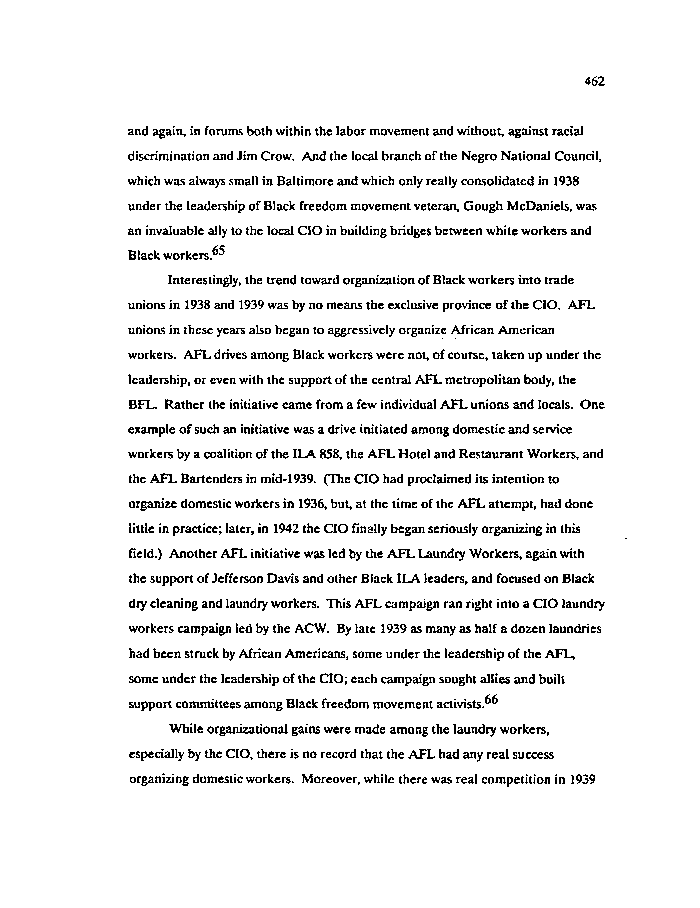|
462
and again, in forums both within the labor movement and without, against racial
discrimination and Jim Crow. And the local branch of the Negro National Council,
which was always small in Baltimore and which only really consolidated in 1938
under the leadership of Black freedom movement veteran, Cough McDaniels, was
an invaluable ally to the local CIO in building bridges between white workers and
Black workers.
Interestingly, the trend toward organization of Black workers into trade
unions in 1938 and 1939 was by no means the exclusive province of the CIO. AFL
unions in these years also began to aggressively organize African American
workers. AFL drives among Black workers were not, of course, taken up under the
leadership, or even with the support of the central AFL metropolitan body, the
BFL. Rather the initiative came from a few individual AFL unions and locals. One
example of such an initiative was a drive initiated among domestic and service
workers by a coalition of the ILA 858, the AFL Hotel and Restaurant Workers, and
the AFL Bartenders in mid-1939. (The CIO had proclaimed its intention to
organize domestic workers in 1936, but, at the time of the AFL attempt, had done
little in practice; later, in 1942 the CIO finally began seriously organizing in this
Held.) Another AFL initiative was led by the AFL Laundry Workers, again with
the support of Jefferson Davis and other Black ILA leaders, and focused on Black
dry cleaning and laundry workers. This AFL campaign ran right into a CIO laundry
workers campaign led by the ACW. By late 1939 as many as half a dozen laundries
had been struck by African Americans, some under the leadership of the AFL,
some under the leadership of the CIO; each campaign sought allies and built
support committees among Black freedom movement activists.
While organizational gains were made among the laundry workers,
especially by the CIO, there is no record that the AFL had any real success
organizing domestic workers. Moreover, while there was real competition in 1939
|

